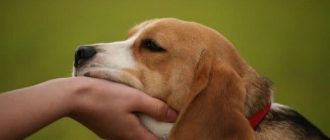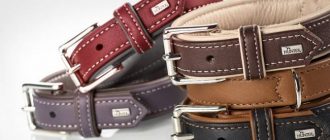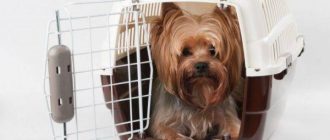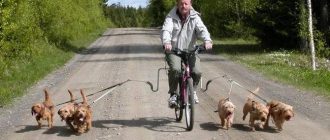There is probably not a single person on Earth who does not know about a problem like a runny nose. Constant flow from the nose, feeling burning and dry mucous membranes, lack of opportunity breathing in freely are just some of the symptoms of a cold or rhinitis, as the disease is called otherwise. But there is no runny nose only with us, but also with our four-legged pets – dogs. And of course animals suffer from the inability to breathe well no less than people.
Reasons for the appearance of a dog runny nose
Contents
The reasons a dog has a runny nose and an animal sneezes a hundred times on the day, abound. IN от самые распространенные из них: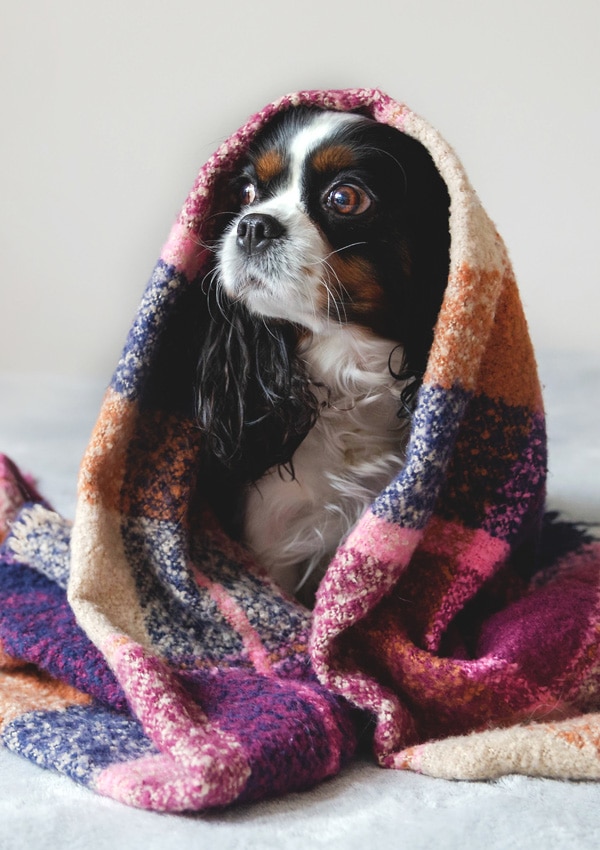
- Переохлаждение. If the dog is wet and frozen under rain walked on the street for a long time, where the temperature is below zero; was bathed, but not dried; slept in a draft, can easily runny nose due to a violation of thermoregulation. Wherein nosebleeds will be transparent, there may be an increase body temperature (up to 39-39.5 degrees) and fever, sneezing and cough;
- Bacterial and viral infections. If rhinitis provoked the introduction of viruses or bacteria into the body, transparent at first discharge from the nose a few days after the onset of the disease will turn into purulent (yellow or greenish, sometimes with red blood streaks), and their consistency change from liquid to thick. In addition to nosebleeds in a dog eyes may water, sometimes vomiting and diarrhea occur. The animal is oppressed, refuses food, and sometimes water. On the nose dry crusts may appear, which together with a runny nose will make it difficult to breathe, this will make the dog breathe hard, perhaps even through the jaws;
- Allergy. The dog’s immune system can perceive in as an enemy, for example, house dust, plant pollen, products care products (shampoos, sprays, etc.). In addition to transparent selections from the animal’s nasal passages will probably experience sneezing, swelling of the mucous membrane, cough, inflammation of the eyes and lacrimation. Вsome situations with allergies in animals are even observed upset stomach and intestines;
- Reaction to strongly smelling substances. Master’s flavors perfume, campfire smoke, gasoline, solvent, chemical cleaners substances with chlorine and many other odors can cause animal increased secretion of transparent mucus from the nose. Dog scratches paws nose, sneezes, she has snot? Perhaps this is the case that the pet breathed in any strong and unpleasant (for canine smell) smell;
- The introduction of a foreign object into the nasal passages. Pets in order to recognize that before them, unfamiliar objects are examined at the help of his scent. No wonder the dog is perfectly calm can breathe, for example, the small details of a child’s designer, blades of grass, pebbles, threads. Moreover, the animal is likely to have flow from only one nostril (if the mucous membranes are damaged, there may be bloody discharge from the nose). The dog will sneeze, rub paw nose, shake your head;
- Neoplasms in the nasal cavity (tumors, polyps, cysts). If there are problems of this kind, in addition to discharge from the nose of the animal will have pain, difficulty breathing. The dog will try to establish a flow of air into the nostrils. with frequent rubbing paws. Allocations can be like transparent, and purulent or bloody;
- Mechanical damage or congenital cavity abnormalities the mouth and sinuses (splitting of the palate, a broken nose or jaw). If the dog has ever come in contact with damage organs of smell, it may leak from the nose, there are problems with breathing (the animal sniffs and snorts, often breathes through the mouth);
- Diseases of the genitourinary and endocrine systems, liver, heart, ear and eye inflammation, worms or fleas infestations. By themselves, these ailments of rhinitis will not cause, but negatively affect the state of immunity of the dog. In other words, the body exhausted by a disease (for example, kidney problems) of an animal will not be able to resist infection that can cause runny nose. In addition, rhinitis may develop in too young or an elderly animal whose immunity is not so strong.
Symptoms of a runny nose in dogs
As we found out, nasal discharge may vary in intensity, consistency, color, depending on the cause the appearance of a cold. However, common symptoms of a runny nose in dogs таковы: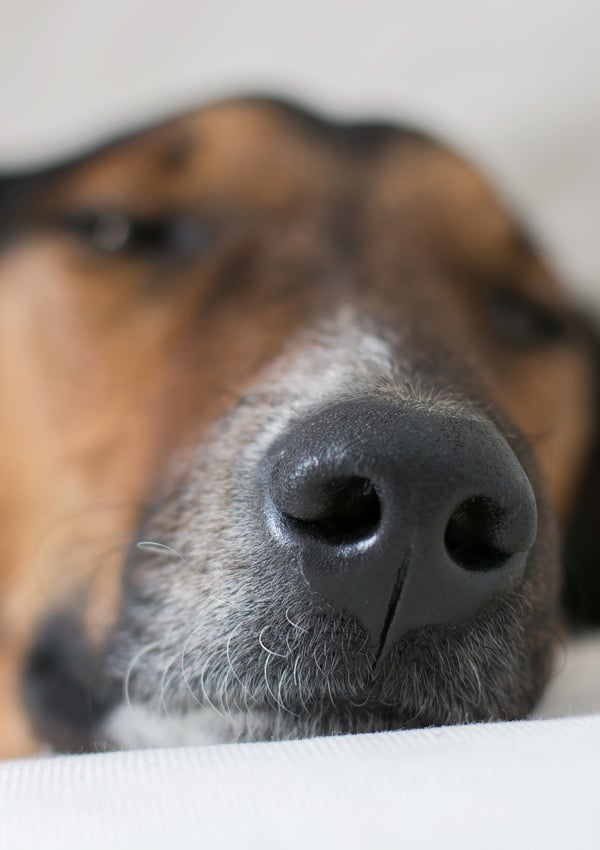
- Выделения из носа (от прозрачных до желтых или зеленых, иногдаwith blood);
- Labored breathing;
- Sniffing, snoring during sleep;
- Attempts to improve breathing with the help of paws;
- The appearance of painful crusts on the nose with protracted runny nose;
- Loss of appetite;
- Worsening scent;
- Sneezing
- Lacrimation.
How to help a dog with a runny nose
What to do if a dog has a runny nose? How to help a pet, not harming this? Firstly, first you need to find out that it caused a runny nose. The dog fell under heavy rain for a day or two back? Perhaps it’s a cold. Or, for example, in an animal recently in a fight suffered a nose? Then a runny nose could cause the injury. Secondly, the owner should carefully examine the pet by illuminating the nasal passages with a flashlight. If a a foreign body is stuck there, it is necessary to remove it with tweezers, trying not to hurt the dog. If you handle своими силами не удается, следует обратиться к ветеринару. В-третьих, важно понаблюдатьfor the animal. Thick, viscous discharge from the nose, apathy, refusal eating, digestive disorders, panting – serious causes see a doctor as soon as possible to save the dog. With the “harmless” this does not happen in the common cold. If the dog is cheerful, active, has not lost interest in food, and from her nose transparent snot flow no more than 2-3 days, you should not worry: the animal, most likely, on its own runny nose will win. However, if more than 3 are already flowing from the dog’s nose days, and the discharge changed the shade and texture, it’s time to proceed to action. Consider how to treat a runny nose in a dog:
В-третьих, важно понаблюдатьfor the animal. Thick, viscous discharge from the nose, apathy, refusal eating, digestive disorders, panting – serious causes see a doctor as soon as possible to save the dog. With the “harmless” this does not happen in the common cold. If the dog is cheerful, active, has not lost interest in food, and from her nose transparent snot flow no more than 2-3 days, you should not worry: the animal, most likely, on its own runny nose will win. However, if more than 3 are already flowing from the dog’s nose days, and the discharge changed the shade and texture, it’s time to proceed to action. Consider how to treat a runny nose in a dog:
- If the dog has difficulty breathing from the nasal discharge you can remove them with cotton buds (preferably with limiter) soaked in warm boiled water;
- When the nose of an animal with a runny nose forms crusts, they should be carefully removed with a cotton pad, dipped in water, chamomile broth, 3% hydrogen peroxide. To prevent the appearance of dry crusts in the future, nose it is advisable after processing (removing the crust) to smear with petroleum jelly or oxolinic ointment;
- If the nose constantly dries during a runny nose in an animal, its treated with crushed tablets or powder streptocide;
- You can help the dog by putting a bag of heated salt on his nose (or sand) for a few minutes. The procedure can be repeated several times a day;
- Do not drip human nose drops for dogs from a cold worth it. The only exception is oil drops or sprays on natural basis (like “Pinosol” or “Eucasept”). They can apply to dogs in rare cases, if the nose is completely “refuses” to breathe;
- Strengthen the animal’s immunity, and at the same time launch a fight against infections are possible with the help of “Maxidine”, which should instill in dog’s nostrils (1-2 drops) 2-3 times a day;
- Sometimes an animal is treated with folk remedies: instilled in the nostrils successive or chamomile decoctions, carrot or beet juice. Coltsfoot or violet decoctions can be washed the nose of the dog;
- It’s good to support the animal’s body with vitamins A and E, which contained in food or special additives;
- It is advisable to give food to a dog with rhinitis in a warm liquid form. If the doggie is used to the finished feed, it can be soaked in water, to facilitate the chewing process of the dog (it is sometimes difficult if does not breathe nose);
- Do not give your dog cold water. Drink before serving it is advisable for the dog to slightly warm up;
- It is important to protect a dog with a runny nose from hypothermia: reduce to Minimize or cancel walks if it’s cool outside; refuse from bathing to recovery; eliminate drafts. If in an apartment cool, you can shelter the animal while resting warm a plaid.
All of these measures can be used to treat a runny nose in dogs if no serious symptoms of illness are observed (refusal of food and water, lack of motor activity, vomiting and etc.). If the dog is really ill, there is only one solution: rather consult a veterinarian.

